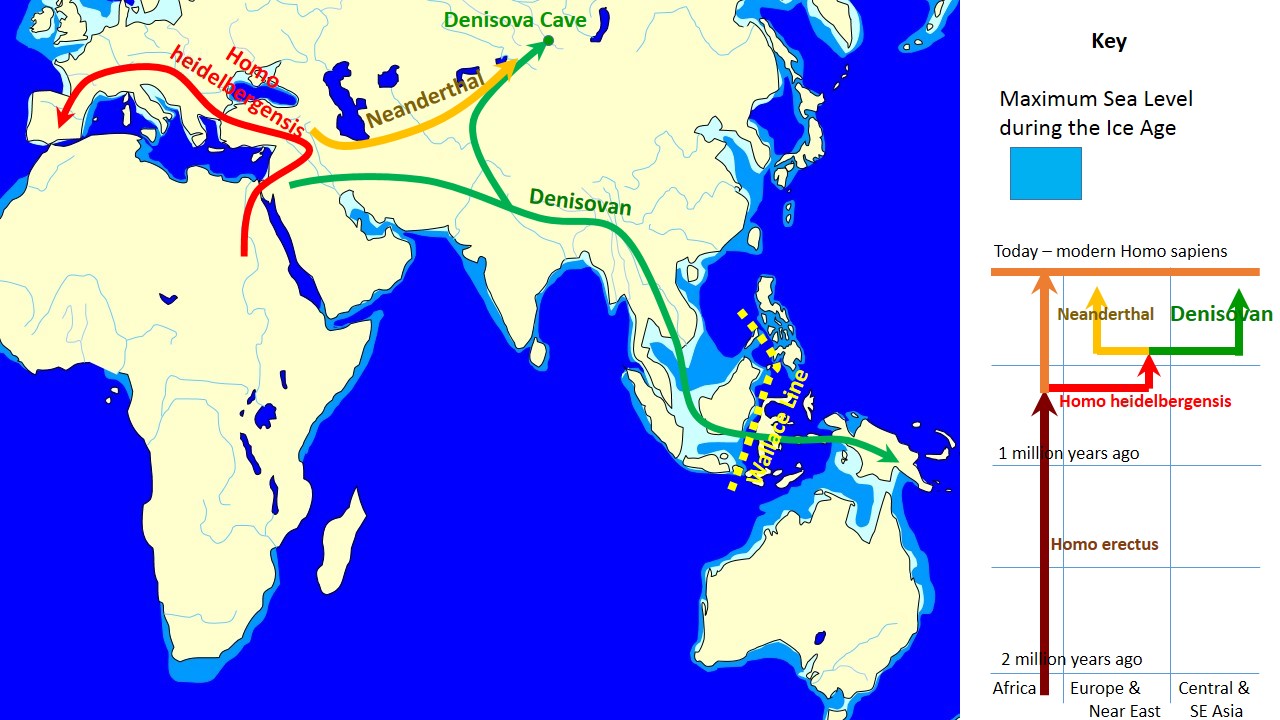So Slon ran the test several more times on other bits of the bone, only to get the same results. The mitochondrial DNA was from a Neanderthal mother and the nuclear DNA inherited from both the mother and father, showed the child's ancient paternal lineage, matching the genetic signature of Denisovans.
Neanderthals and Denisovans are our closest extinct relatives. Although, Scientists have long believed that these two groups had interbred with our ancestors as their genes can be found in modern human genomes. But here it was, the offspring from the two species.
 |
| A model of the phylogeny of H. sapiens over the last 600,000 years (vertical axis). The horizontal axis represents geographic location; the vertical axis represents time in thousands of years ago. |
The first Neanderthal fossil was found in 1829, but it was some years later that Neanderthals became to be regarded as possible human ancestors. Neanderthals had co-existed with modern humans for long periods of time, but they became extinct about 28,000 years ago. There are many fossils of Neanderthal individuals from a variety of age groups.
 |
| The evolution and geographic spread of Denisovans as compared with other groups |
